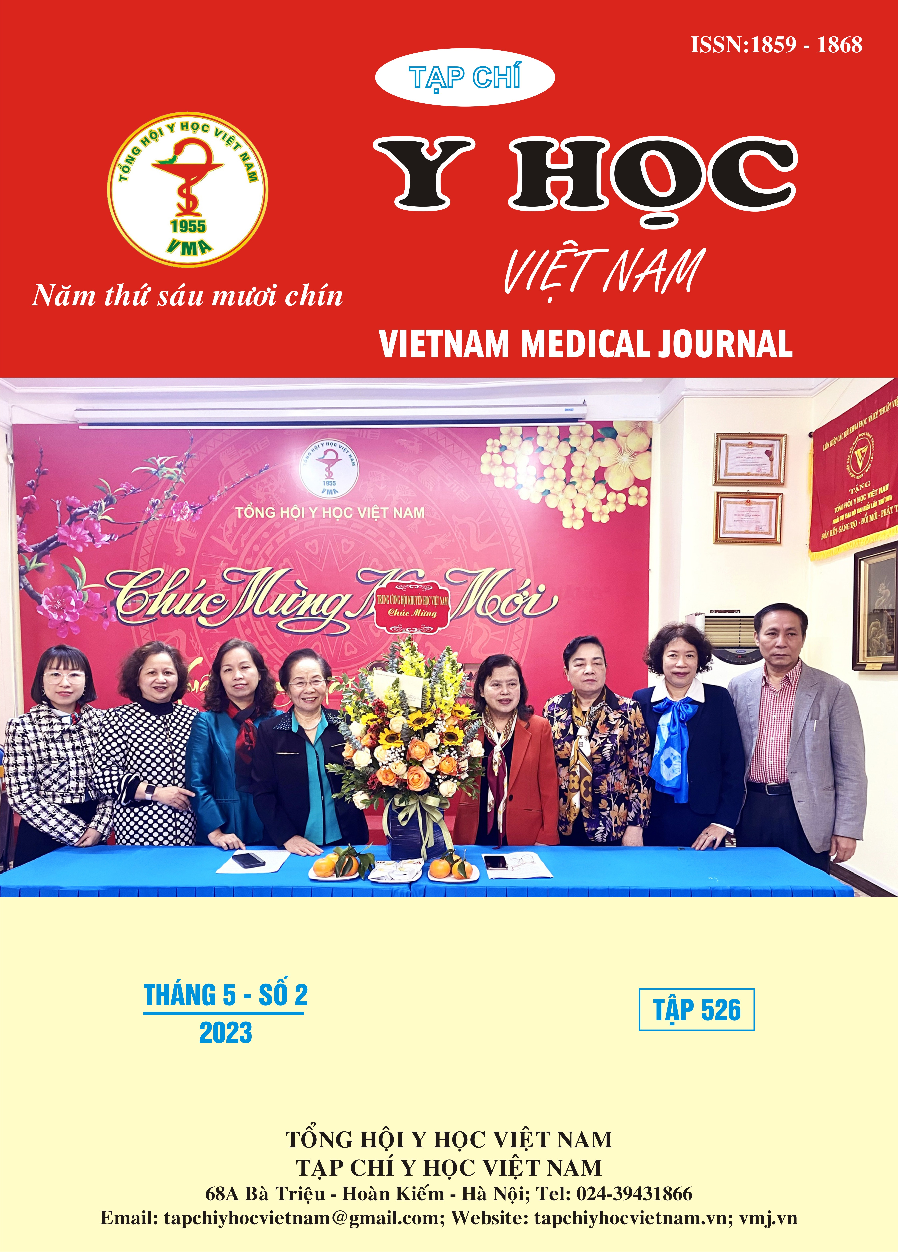SOLUBILITY PREDICTION AND VECTOR DESIGN FOR THE EXPRESSION OF PROTEIN KOJA FROM THE BIOSYNTHETIC PATHWAY OF KOJIC ACID
Main Article Content
Abstract
Background: Kojic acid is a skin-whittening agent widely used in cosmetics. It is a secondary metabolite produced by a few Aspergillus species. Recent studies have identified that gene kojA played an important role in the biosynthetic pathway of kojic acid in Aspergillus oryzae. Objectives: This study aims to predict the solubility of protein KojA, and design the recombinant plasmid thereof to express KojA as soluble protein in Escherichia coli. Methods: A homology model of KojA was built using SWISS-MODEL server. Three tools including Protein-Sol, SOLart và SoDoPE were applied to predict the solubility of KojA and its fusion with tags. Results: All three tools predicted a poor solubility of KojA; the solubility can be improved with tags MBP and SUMO as suggested by SoDoPE. Conclusions: The study has predicted the solubility of protein KojA and proposed a recombinant plasmid in which kojA is fused with SUMO and condons optimized for expression in E. coli.
Article Details
Keywords
acid kojic, gen kojA, khả năng hoà tan
References
2. Terabayashi Y., Sano M., Yamane N. et al. (2010), "Identification and characterization of genes responsible for biosynthesis of kojic acid, an industrially important compound from Aspergillus oryzae", Fungal Genetics and Biology. 47 (12), pp. 953-961.
3. Waterhouse A., Bertoni M., Bienert S. et al. (2018), "SWISS-MODEL: homology modelling of protein structures and complexes", Nucleic acids research. 46 (W1), pp. W296-W303.
4. Hebditch M., Carballo-Amador M. A., Charonis S. et al. (2017), "Protein–Sol: a web tool for predicting protein solubility from sequence", Bioinformatics. 33 (19), pp. 3098-3100.
5. Hou Q., Kwasigroch J. M., Rooman M. et al. (2020), "SOLart: a structure-based method to predict protein solubility and aggregation", Bioinformatics. 36 (5), pp. 1445-1452.
6. Bhandari B.K., Lim C.S., Gardner P.P. (2021) “TISIGNER.com: web services for improving recombinant protein production”, Nucleic Acids Research. 49 (W1), pp. W654-W661.
7. Costa S. J., Almeida A., Castro A., Domingues L., Besir H. (2012), “The novel Fh8 and H fusion partners for soluble protein expression in Escherichia coli: a comparison with the traditional gene fusion technology”, Applied Microbiology and Biotechnology, 97(15), 6779-6791.


